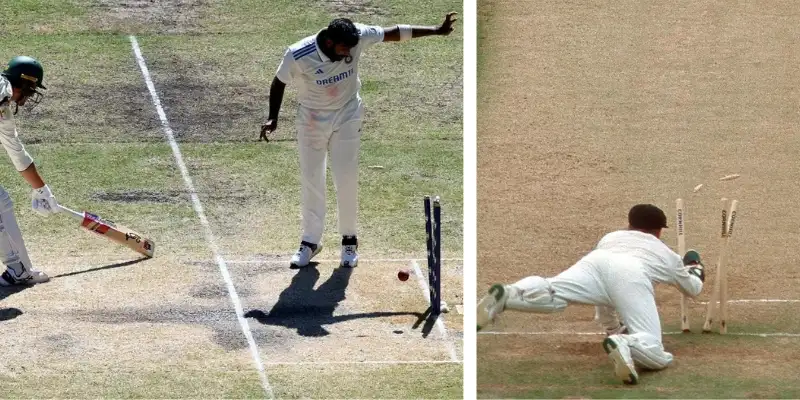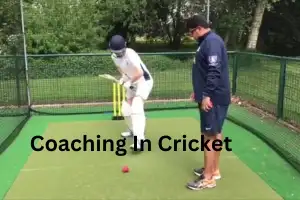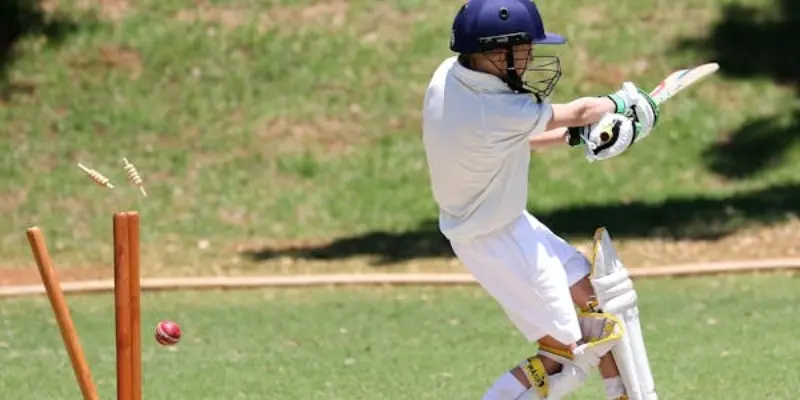Think Before You Run – The Most Common Dismissal Is RunOut in Cricket
Published: 23 Jan 2025
Cricket is largely about runs on the board —a batter’s smart running between the wickets can make all the difference in the game’s end result. Cricket running refers to how batters move between the creases to score runs. Good running can turn singles into doubles and put pressure on the fielding side. Poor running, on the other hand, can lead to unnecessary run-outs and lost opportunities.
Many matches are won or lost based on how well batters run between the wickets. Whether you’re playing a Test match, One-Day game, or T20, quick and smart running will eventually make a huge difference.
We will cover everything about running and run out in cricket with a pro tip for running.

Basics of Running Between the Wickets
Runs often don’t come only by hitting boundaries. Most runs come from batters running between the wickets. Here are some key points:
- Calling and Communication: Batters must use clear calls—“Yes,” “No,” or “Wait”—to avoid confusion and prevent run-outs.
- Quick Singles: A batter can score a run by reacting fast to a short that he thinks will give him time to complete a run before the fielder picks and throws the ball back.
- Doubles and Triples: Batters can push for two or even three runs by running fast if the ball is hit into the gaps.
- Judgment and Awareness: A batter must know when to run and when to stay, based on the fielder’s position and how quickly they can return the ball.
Good running between the wickets keeps the scoreboard moving, builds partnerships, and helps a team maintain momentum in an innings. A well-timed run can sometimes be as valuable as a boundary!
What is a Run Out in Cricket?
A run-out happens when a fielder hits the stumps with the ball before the batter reaches the crease while running between wickets. It’s one of the most common ways a batter can get out.
Here’s how it works in steps:
Step 1: The batter hits the ball and starts running.
Step 2: A fielder picks up the ball and throws it at the stumps.
Step 3: If the ball hits the stumps and the batter is short of his crease, the batter is run out.
A runout can happen at either end of the pitch. If both batters are running, the fielder can choose to aim at either side of the pitch which he thinks has more chance for a run out.
A good fielding team looks for run-out chances to put pressure on the batting side. That’s why batters must be alert and quick while running!
The Striker’s and The Non-Striker’s End
The striker’s end is where the batter faces the bowler, and the non-striker’s end is simply the bowling end. These ends rotate after every over; that is, the striker’s end becomes the non-striker’s end in the next over, and the non-striker’s end becomes the striker’s end. This rotation continues like this. A run-out chance can occur at either end. The batter who is approaching the crease when the ball is hit will be run out.
Types of Run-Outs in Cricket

Runouts can happen in different ways. Here are the most common ones:
1. Direct-Hit Run Out
- The fielder throws the ball straight at the stumps.
- If the ball hits and the batter is outside the crease, it’s a runout.
2. Assisted Run Out
- The fielder throws the ball to the wicketkeeper or bowler, who then breaks the stumps.
- This happens when the throw is not direct but still results in a runout.
3. Mankading
- This is a special type of runout.
- If the non-striker leaves the crease too early, the bowler can break the stumps before delivering the ball.
Each type of run-out requires quick reflexes from the fielders and sharp decision-making from the batters. Smart running can help batters avoid these situations!
How to Avoid Getting Run Out
A run-out can be frustrating for any batter and the team as well. But with the right techniques, and approach players can reduce the chances of it. Here’s how:
1. Call Loud and Clear
- Always communicate with partner when running.
- The players should practice running like all other drills to develop chemistry and understanding.
- Use simple calls: “Yes,” “No,” or “Wait.”
- Be loud enough so there’s no confusion.
2. Watch the Ball
- Never run blindly.
- Always keep an eye on where the ball is before deciding to run.
- If a player has a reputation as a quick fielder, don’t take the chance until it’s causal to get a run.
A Pro Tip :
Who should follow whose call? After playing the short…
- if the ball goes behind the striker, the non-striker will call, as he can judge if there is a run.
- If the ball goes in front of the striker, the striker will call because he has better judgment.
3. Run Fast and Slide the Bat
- Sprint as fast as possible between the wickets.
- Stretch your bat forward and slide it inside the crease to be safe, as the player will still be run out if the bat is in the crease but not on the ground, but in the air.
4. Back Up Properly
- The non-striker should take a small start (backup) but not leave the crease before the bowler delivers the ball.
- Stay alert in case the bowler tries a Mankading dismissal.
5. Trust Your Partner
- Running between wickets is about teamwork.
- Always look at the partner before starting a run.
With good communication and smart running, you can avoid unnecessary run-outs and score more runs!
What Makes a Batter a Good Runner?
Great batters are also great runners between the wickets. Here are the key skills you need:
1. Quick Decision-Making
- You have only a second to decide whether to run or not.
- Hesitation leads to run-outs, so make decisions fast.
2. Speed and Agility
- A good runner is quick between the wickets.
- Short sprints and sharp turns can save valuable seconds.
3. Communication
- Good runners always communicate with their batting partners.
- A simple, loud call can avoid confusion and mistakes.
4. Awareness of Fielders
- A batter must always know where the fielders are.
- If a fielder is deep, there’s a chance for an extra run.
- If the fielder is close, it’s better to stay safe.
- The caliber of the fielder is also very important to keep in mind.
5. Smart Running Strategies
- Take quick singles to rotate the strike.
- Judge when to take two or three runs by watching the field.
- Know when to sacrifice a run if your partner is in danger.
Being a good runner between wickets can add 10-20 extra runs to your team’s total. Every run counts, especially in close matches!
Famous Run-Outs in Cricket History
Run-outs have changed the course of many cricket matches. Here are some of the most famous runouts in history:
1. MS Dhoni vs New Zealand (2019 World Cup Semi-Final)
- One of the most heartbreaking runouts in Indian cricket history.
- Dhoni was India’s last hope in the chase, but a direct hit from Martin Guptill ended his innings.
- India lost the match, and New Zealand advanced to the final.
2. Allan Donald vs Australia (1999 World Cup Semi-Final)
- One of the most dramatic run-outs ever!
- South Africa needed one run to win, but a mix-up between Lance Klusener and Allan Donald led to a runout.
- The match ended in a tie, and Australia advanced to the final due to a better net run rate.
3. Inzamam-ul-Haq’s Many Run Outs
- Inzamam-ul-Haq was known for his batting but also for getting run out multiple times.
- His slow running and misjudgments led to many hilarious and crucial dismissals.
- Fans still remember his unusual ways of getting out!
These run-outs remind us how one moment of hesitation or brilliance can change a match!
Final Thoughts
Running between the wickets is a skill that every batter must master. It’s not just about speed but also smart decision-making, teamwork, and awareness.
A single run can decide the outcome of a match. So, train hard, stay alert, and make every run count!

- Be Respectful
- Stay Relevant
- Stay Positive
- True Feedback
- Encourage Discussion
- Avoid Spamming
- No Fake News
- Don't Copy-Paste
- No Personal Attacks

- Be Respectful
- Stay Relevant
- Stay Positive
- True Feedback
- Encourage Discussion
- Avoid Spamming
- No Fake News
- Don't Copy-Paste
- No Personal Attacks





